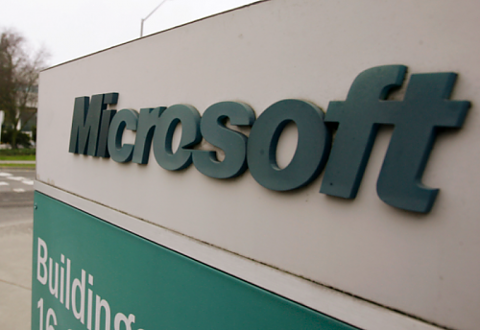 Sinofsky talks Windows 8 development at last year's BUILD conference.[/caption] When Steven Sinofsky stepped down as head of Microsoft’s Windows division earlier this week, multiple publications cited friction with other executives as the primary reason behind the departure. Whether or not that’s the case—neither Sinofsky nor Microsoft has offered an official explanation, aside from the usual platitudes—someone with connections to Microsoft is claiming that Sinofsky’s departure stemmed from a failed attempt to bring additional parts of the company under his control. (Hat tip to Slashgear for ferreting out the following blog posting.) “Steven had apparently lost recent battles to bring both Windows Phone and the Developer Division under his control,” Hal Berenson, president of consulting group True Mountain Group and a former Microsoft executive, wrote in a Nov. 13 blog posting. “I suspect that he saw those [losses] both as a roadblock to where he wanted to take Windows over the next few years, and a clear indication that his political power within Microsoft had peaked.” The departure, he added, was the “outgrowth of conflict.” Berenson’s claim was enough to draw Sinofsky himself into the discussion. In the comments section below the posting, Sinofsky left a short note suggesting that rumors of a multi-product takeover were, frankly, malarkey. “Relative to what you say above, I never initiated any discussions to bring together the organizations/products you describe and no one ever approached me to manage them as part of Windows 7 or 8,” he wrote. (For anyone who doubts it’s actually Sinofsky at the keyboard, the commenter handle is hyperlinked to his Twitter page, where he engages in a bit of semantic jousting over the comment with Ars Technica’s Peter Bright.) “If we had worked together you would know that historically, very few things moved into teams I managed as (you’ve no doubt seen in internal blogs),” Sinofsky’s comment added, “and when they did I pushed back hard looking for a cross-group way to achieve the goal (in other words, decide open issues rather than force an org change to subsequently decide something).” Collaborating within an existing organization, Sinofsky concluded, is better than disrupting it “unless it is on a product cycle boundary and far better to plan and execute together than just organize together.” Following Sinofsky’s departure, Microsoft CEO Steve Ballmer decided to split control of the Windows division between two executives reporting directly to him. Julie Larson-Green will head Windows engineering, while Tami Reller will lead the division’s business and marketing strategy. In the wake of Sinofsky’s departure, unnamed sources speaking to AllThingsD said that the former Windows division president “was viewed at the top levels as not the kind of team player that the company was looking for,” and that tension between him and various top executives eventually led to his ouster. Sources also told The Verge that Sinofsky was “abrasive and off-putting, aggressively maintaining his control over products and putting up roadblocks.” Image: Microsoft
Sinofsky talks Windows 8 development at last year's BUILD conference.[/caption] When Steven Sinofsky stepped down as head of Microsoft’s Windows division earlier this week, multiple publications cited friction with other executives as the primary reason behind the departure. Whether or not that’s the case—neither Sinofsky nor Microsoft has offered an official explanation, aside from the usual platitudes—someone with connections to Microsoft is claiming that Sinofsky’s departure stemmed from a failed attempt to bring additional parts of the company under his control. (Hat tip to Slashgear for ferreting out the following blog posting.) “Steven had apparently lost recent battles to bring both Windows Phone and the Developer Division under his control,” Hal Berenson, president of consulting group True Mountain Group and a former Microsoft executive, wrote in a Nov. 13 blog posting. “I suspect that he saw those [losses] both as a roadblock to where he wanted to take Windows over the next few years, and a clear indication that his political power within Microsoft had peaked.” The departure, he added, was the “outgrowth of conflict.” Berenson’s claim was enough to draw Sinofsky himself into the discussion. In the comments section below the posting, Sinofsky left a short note suggesting that rumors of a multi-product takeover were, frankly, malarkey. “Relative to what you say above, I never initiated any discussions to bring together the organizations/products you describe and no one ever approached me to manage them as part of Windows 7 or 8,” he wrote. (For anyone who doubts it’s actually Sinofsky at the keyboard, the commenter handle is hyperlinked to his Twitter page, where he engages in a bit of semantic jousting over the comment with Ars Technica’s Peter Bright.) “If we had worked together you would know that historically, very few things moved into teams I managed as (you’ve no doubt seen in internal blogs),” Sinofsky’s comment added, “and when they did I pushed back hard looking for a cross-group way to achieve the goal (in other words, decide open issues rather than force an org change to subsequently decide something).” Collaborating within an existing organization, Sinofsky concluded, is better than disrupting it “unless it is on a product cycle boundary and far better to plan and execute together than just organize together.” Following Sinofsky’s departure, Microsoft CEO Steve Ballmer decided to split control of the Windows division between two executives reporting directly to him. Julie Larson-Green will head Windows engineering, while Tami Reller will lead the division’s business and marketing strategy. In the wake of Sinofsky’s departure, unnamed sources speaking to AllThingsD said that the former Windows division president “was viewed at the top levels as not the kind of team player that the company was looking for,” and that tension between him and various top executives eventually led to his ouster. Sources also told The Verge that Sinofsky was “abrasive and off-putting, aggressively maintaining his control over products and putting up roadblocks.” Image: Microsoft Sinofsky Dismisses Trying to Take Over Windows Phone, Developers
[caption id="attachment_5915" align="aligncenter" width="584"]  Sinofsky talks Windows 8 development at last year's BUILD conference.[/caption] When Steven Sinofsky stepped down as head of Microsoft’s Windows division earlier this week, multiple publications cited friction with other executives as the primary reason behind the departure. Whether or not that’s the case—neither Sinofsky nor Microsoft has offered an official explanation, aside from the usual platitudes—someone with connections to Microsoft is claiming that Sinofsky’s departure stemmed from a failed attempt to bring additional parts of the company under his control. (Hat tip to Slashgear for ferreting out the following blog posting.) “Steven had apparently lost recent battles to bring both Windows Phone and the Developer Division under his control,” Hal Berenson, president of consulting group True Mountain Group and a former Microsoft executive, wrote in a Nov. 13 blog posting. “I suspect that he saw those [losses] both as a roadblock to where he wanted to take Windows over the next few years, and a clear indication that his political power within Microsoft had peaked.” The departure, he added, was the “outgrowth of conflict.” Berenson’s claim was enough to draw Sinofsky himself into the discussion. In the comments section below the posting, Sinofsky left a short note suggesting that rumors of a multi-product takeover were, frankly, malarkey. “Relative to what you say above, I never initiated any discussions to bring together the organizations/products you describe and no one ever approached me to manage them as part of Windows 7 or 8,” he wrote. (For anyone who doubts it’s actually Sinofsky at the keyboard, the commenter handle is hyperlinked to his Twitter page, where he engages in a bit of semantic jousting over the comment with Ars Technica’s Peter Bright.) “If we had worked together you would know that historically, very few things moved into teams I managed as (you’ve no doubt seen in internal blogs),” Sinofsky’s comment added, “and when they did I pushed back hard looking for a cross-group way to achieve the goal (in other words, decide open issues rather than force an org change to subsequently decide something).” Collaborating within an existing organization, Sinofsky concluded, is better than disrupting it “unless it is on a product cycle boundary and far better to plan and execute together than just organize together.” Following Sinofsky’s departure, Microsoft CEO Steve Ballmer decided to split control of the Windows division between two executives reporting directly to him. Julie Larson-Green will head Windows engineering, while Tami Reller will lead the division’s business and marketing strategy. In the wake of Sinofsky’s departure, unnamed sources speaking to AllThingsD said that the former Windows division president “was viewed at the top levels as not the kind of team player that the company was looking for,” and that tension between him and various top executives eventually led to his ouster. Sources also told The Verge that Sinofsky was “abrasive and off-putting, aggressively maintaining his control over products and putting up roadblocks.” Image: Microsoft
Sinofsky talks Windows 8 development at last year's BUILD conference.[/caption] When Steven Sinofsky stepped down as head of Microsoft’s Windows division earlier this week, multiple publications cited friction with other executives as the primary reason behind the departure. Whether or not that’s the case—neither Sinofsky nor Microsoft has offered an official explanation, aside from the usual platitudes—someone with connections to Microsoft is claiming that Sinofsky’s departure stemmed from a failed attempt to bring additional parts of the company under his control. (Hat tip to Slashgear for ferreting out the following blog posting.) “Steven had apparently lost recent battles to bring both Windows Phone and the Developer Division under his control,” Hal Berenson, president of consulting group True Mountain Group and a former Microsoft executive, wrote in a Nov. 13 blog posting. “I suspect that he saw those [losses] both as a roadblock to where he wanted to take Windows over the next few years, and a clear indication that his political power within Microsoft had peaked.” The departure, he added, was the “outgrowth of conflict.” Berenson’s claim was enough to draw Sinofsky himself into the discussion. In the comments section below the posting, Sinofsky left a short note suggesting that rumors of a multi-product takeover were, frankly, malarkey. “Relative to what you say above, I never initiated any discussions to bring together the organizations/products you describe and no one ever approached me to manage them as part of Windows 7 or 8,” he wrote. (For anyone who doubts it’s actually Sinofsky at the keyboard, the commenter handle is hyperlinked to his Twitter page, where he engages in a bit of semantic jousting over the comment with Ars Technica’s Peter Bright.) “If we had worked together you would know that historically, very few things moved into teams I managed as (you’ve no doubt seen in internal blogs),” Sinofsky’s comment added, “and when they did I pushed back hard looking for a cross-group way to achieve the goal (in other words, decide open issues rather than force an org change to subsequently decide something).” Collaborating within an existing organization, Sinofsky concluded, is better than disrupting it “unless it is on a product cycle boundary and far better to plan and execute together than just organize together.” Following Sinofsky’s departure, Microsoft CEO Steve Ballmer decided to split control of the Windows division between two executives reporting directly to him. Julie Larson-Green will head Windows engineering, while Tami Reller will lead the division’s business and marketing strategy. In the wake of Sinofsky’s departure, unnamed sources speaking to AllThingsD said that the former Windows division president “was viewed at the top levels as not the kind of team player that the company was looking for,” and that tension between him and various top executives eventually led to his ouster. Sources also told The Verge that Sinofsky was “abrasive and off-putting, aggressively maintaining his control over products and putting up roadblocks.” Image: Microsoft
 Sinofsky talks Windows 8 development at last year's BUILD conference.[/caption] When Steven Sinofsky stepped down as head of Microsoft’s Windows division earlier this week, multiple publications cited friction with other executives as the primary reason behind the departure. Whether or not that’s the case—neither Sinofsky nor Microsoft has offered an official explanation, aside from the usual platitudes—someone with connections to Microsoft is claiming that Sinofsky’s departure stemmed from a failed attempt to bring additional parts of the company under his control. (Hat tip to Slashgear for ferreting out the following blog posting.) “Steven had apparently lost recent battles to bring both Windows Phone and the Developer Division under his control,” Hal Berenson, president of consulting group True Mountain Group and a former Microsoft executive, wrote in a Nov. 13 blog posting. “I suspect that he saw those [losses] both as a roadblock to where he wanted to take Windows over the next few years, and a clear indication that his political power within Microsoft had peaked.” The departure, he added, was the “outgrowth of conflict.” Berenson’s claim was enough to draw Sinofsky himself into the discussion. In the comments section below the posting, Sinofsky left a short note suggesting that rumors of a multi-product takeover were, frankly, malarkey. “Relative to what you say above, I never initiated any discussions to bring together the organizations/products you describe and no one ever approached me to manage them as part of Windows 7 or 8,” he wrote. (For anyone who doubts it’s actually Sinofsky at the keyboard, the commenter handle is hyperlinked to his Twitter page, where he engages in a bit of semantic jousting over the comment with Ars Technica’s Peter Bright.) “If we had worked together you would know that historically, very few things moved into teams I managed as (you’ve no doubt seen in internal blogs),” Sinofsky’s comment added, “and when they did I pushed back hard looking for a cross-group way to achieve the goal (in other words, decide open issues rather than force an org change to subsequently decide something).” Collaborating within an existing organization, Sinofsky concluded, is better than disrupting it “unless it is on a product cycle boundary and far better to plan and execute together than just organize together.” Following Sinofsky’s departure, Microsoft CEO Steve Ballmer decided to split control of the Windows division between two executives reporting directly to him. Julie Larson-Green will head Windows engineering, while Tami Reller will lead the division’s business and marketing strategy. In the wake of Sinofsky’s departure, unnamed sources speaking to AllThingsD said that the former Windows division president “was viewed at the top levels as not the kind of team player that the company was looking for,” and that tension between him and various top executives eventually led to his ouster. Sources also told The Verge that Sinofsky was “abrasive and off-putting, aggressively maintaining his control over products and putting up roadblocks.” Image: Microsoft
Sinofsky talks Windows 8 development at last year's BUILD conference.[/caption] When Steven Sinofsky stepped down as head of Microsoft’s Windows division earlier this week, multiple publications cited friction with other executives as the primary reason behind the departure. Whether or not that’s the case—neither Sinofsky nor Microsoft has offered an official explanation, aside from the usual platitudes—someone with connections to Microsoft is claiming that Sinofsky’s departure stemmed from a failed attempt to bring additional parts of the company under his control. (Hat tip to Slashgear for ferreting out the following blog posting.) “Steven had apparently lost recent battles to bring both Windows Phone and the Developer Division under his control,” Hal Berenson, president of consulting group True Mountain Group and a former Microsoft executive, wrote in a Nov. 13 blog posting. “I suspect that he saw those [losses] both as a roadblock to where he wanted to take Windows over the next few years, and a clear indication that his political power within Microsoft had peaked.” The departure, he added, was the “outgrowth of conflict.” Berenson’s claim was enough to draw Sinofsky himself into the discussion. In the comments section below the posting, Sinofsky left a short note suggesting that rumors of a multi-product takeover were, frankly, malarkey. “Relative to what you say above, I never initiated any discussions to bring together the organizations/products you describe and no one ever approached me to manage them as part of Windows 7 or 8,” he wrote. (For anyone who doubts it’s actually Sinofsky at the keyboard, the commenter handle is hyperlinked to his Twitter page, where he engages in a bit of semantic jousting over the comment with Ars Technica’s Peter Bright.) “If we had worked together you would know that historically, very few things moved into teams I managed as (you’ve no doubt seen in internal blogs),” Sinofsky’s comment added, “and when they did I pushed back hard looking for a cross-group way to achieve the goal (in other words, decide open issues rather than force an org change to subsequently decide something).” Collaborating within an existing organization, Sinofsky concluded, is better than disrupting it “unless it is on a product cycle boundary and far better to plan and execute together than just organize together.” Following Sinofsky’s departure, Microsoft CEO Steve Ballmer decided to split control of the Windows division between two executives reporting directly to him. Julie Larson-Green will head Windows engineering, while Tami Reller will lead the division’s business and marketing strategy. In the wake of Sinofsky’s departure, unnamed sources speaking to AllThingsD said that the former Windows division president “was viewed at the top levels as not the kind of team player that the company was looking for,” and that tension between him and various top executives eventually led to his ouster. Sources also told The Verge that Sinofsky was “abrasive and off-putting, aggressively maintaining his control over products and putting up roadblocks.” Image: Microsoft 

